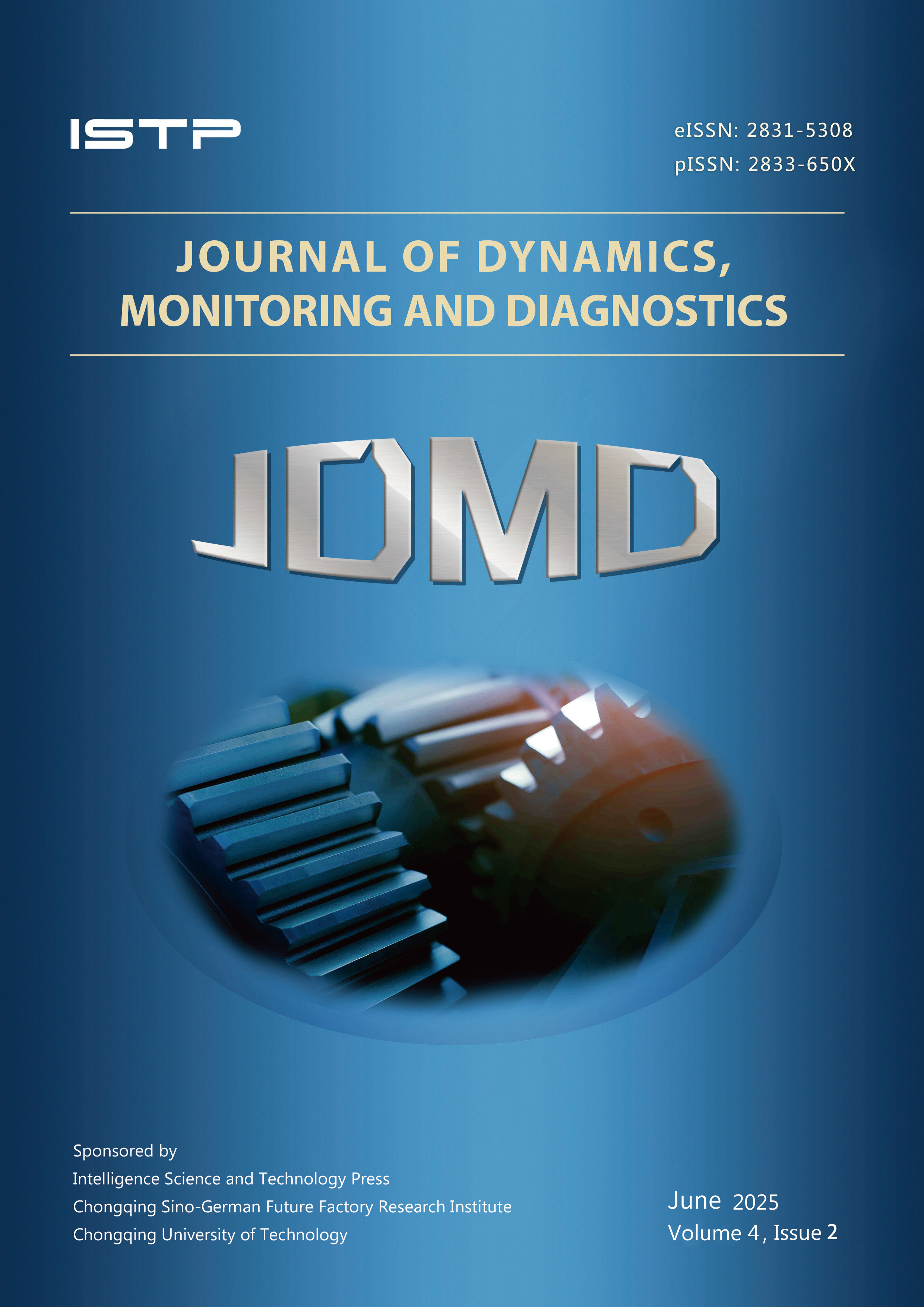Actuator Fault Diagnosis of 3-PR(P)S Parallel Robot Based on Dung Beetle Optimization-Back Propagation Neural Network
DOI:
https://doi.org/10.37965/jdmd.2025.690Keywords:
actuator; Back Propagation neural network; Dung Beetle Algorithm; fault diagnosis; 3-PR(P)S parallel robotAbstract
Any malfunctions of the actuators of the robots have the potential to destroy the robot’s normal motion, and most of the current actuator fault diagnosis methods are difficult to meet the requirements of simplifying the actuator modeling and solving the difficulty of fault data collection. To solve the problem of real-time diagnosis of actuator faults in the 3-PR(P)S parallel robot, the model of 3 PR(P)S parallel robot and data-driven-based method for the fault diagnosis are presented. Firstly, only the input-output relationship of the actuator is considered for modeling actuator faults, reducing the complexity of fault modeling and reducing the time consumption of parameter identification, thereby meeting the requirements of real-time diagnosis. A Simulink model of the electromechanical actuator (EMA) was constructed to analyze actuator faults. Then the short-term analysis method was employed for collecting the sample data of the slider position on the test platform of the EMA system and feature extraction. Training samples for neural networks are obtained. Furthermore, we optimized the Back Propagation (BP) neural network using the Dung Beetle Optimization Algorithm (DBO), which effectively resolved the weights and thresholds of the BP neural network. Compared to BP and Particle Swarm Optimization (PSO)-BP, the DBO-BP has better convergence, convergence rate, and the best-classifying quality. So, the classification for the different actuator faults is obviously improved. Finally, a fault diagnosis system was designed for the actuator of the 3-PR(P)S parallel robot, and the experimental results demonstrate that this system can detect actuator faults within 0.1 seconds. This work also provides the technical support for the fault-tolerant control of the 3-PR(P)S Parallel robot.
Conflict of Interest Statement
The authors declare no conflicts of interest.









